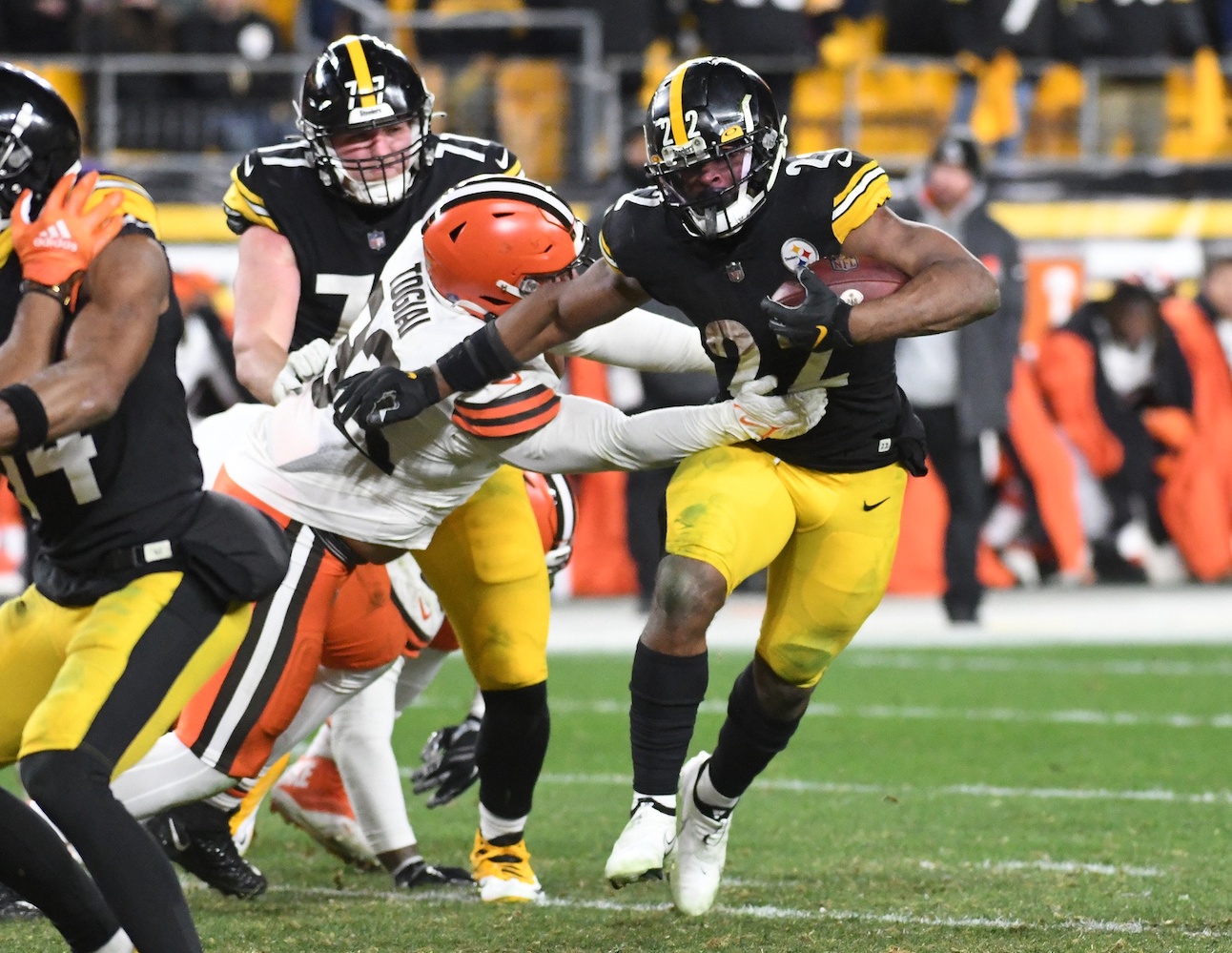A new type of player is emerging in the NFL. Guys who have proven to be among the league’s most dynamic playmakers on offense aren’t allowing themselves to be defined or restricted to one role, one position. The result has been a kind of hybrid player: a receiver that isn’t only catching passes out wide, and simultaneously, a running back that doesn’t always line up in the backfield.
The two players that have most shown off their abilities as hybrid players—especially in recent weeks—are the Atlanta Falcons’ Cordarrelle Patterson and the San Francisco 49ers’ Deebo Samuel. (Taysom Hill is kind of a hybrid player, but that’s a very different conversation.)
Unlike Samuel, a third-year player, Patterson has been in the NFL for a long time and he’s been a part of several teams. For most of his nine years in the league, those teams struggled to use him in a way that maximized his skills effectively.
Since getting to Atlanta, his usage has completely evolved. Where previous teams mostly relegated Patterson to kick return duties, the Falcons have begun to roll with him as their starting running back. For the five weeks since this change, his production has exploded.
After an initial five weeks with about as many rushes as targets, he was averaging 4.2 yards per carry with 11.8 yards per reception. Since his move into the starting role as a running back, he’s up to nearly 4.6 yards per carry with more than 12.8 yards per catch.
Those might seem like very small improvements at first glance, but the leap in production as a back is significant. Breaching that 4.5 mark puts Patterson among the elite tier of running backs; Dalvin Cook, Ezekiel Elliott, and even (pre-injury) Derrick Henry aren’t/weren’t averaging as many yards per carry as Patterson has been.
You might argue that these numbers for Patterson are inflated because of the small sample size we’ve seen of him as a starting running back. After all, it’s a role he’s only held for five games. Well, his performance on Sunday against the Jacksonville Jaguars suggests that his production might only continue to improve. Patterson ended the day with career highs in carries (16), rushing yards (108), and rushing touchdowns (2).
Before you say, “But Jack, it was against the Jaguars,” let me point out that current NFL rushing leader, Jonathan Taylor, had only eight more yards on five additional carries against Jacksonville just two weeks ago. Derrick Henry put up 22 yards more than Patterson did when the Tennessee Titans played the Jaguars in Week 5, but he had an extra 13 carries to do so.
The more action Patterson gets, the better he does, and we’ll have to see how big a factor that could play in this Falcons’ home stretch. They’re quietly in the playoff picture, tied with the seventh-seeded Vikings at 5-6, and three of their last six games are against divisional opponents. Atlanta figuring out how to best use Patterson came at a great time.
A similarly recent development has come in the last three weeks, with the 49ers using Samuel in rushing scenarios. The recent breakout star had already proven his skills as a game-changing receiver earlier this year, pushing his way into the elite tier of receivers over the season’s first half. Now, like Patterson, he’s often been lining up in the backfield and continuing to dominate on the ground with his incredible speed and elusiveness.
In his first eight games of 2021, Samuel had six carries for 22 yards in limited backfield action. Since then, he has 19 rushes for 181 yards—an unbelievable 9.53 yards per carry—and four touchdowns. San Francisco has won three straight and they’re right in the thick of the playoff race as well.
The Falcons and 49ers have, in a way, simplified their offenses down to middle school pickup game logic: put the ball in the hands of the most dynamic player by any means necessary and let them work. Samuel leads the NFL with nearly 15 yards per touch. Patterson is 12th with 6.8. By making things harder on opposing defenses with these hybrid players, they’re finding creative ways to keep winning, and both teams are playoff contenders with six weeks to go.
Filed In
Related Articles
Cincinnati Bengals
Should Joe Burrow Be The NFL MVP?
- Jan 07, 2022
NFL
Steelers Hit A Home Run With Najee Harris
- Jan 07, 2022
Written By


































